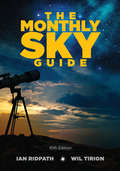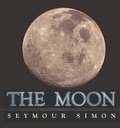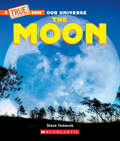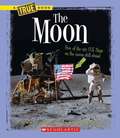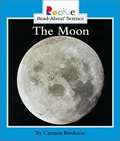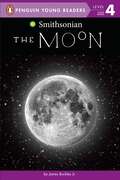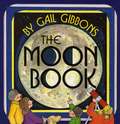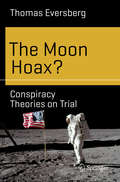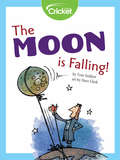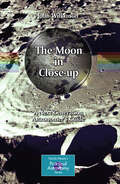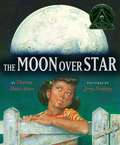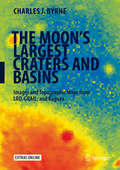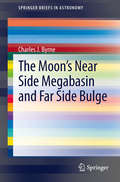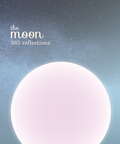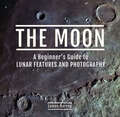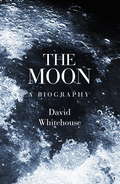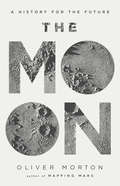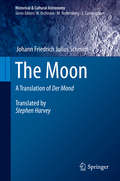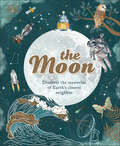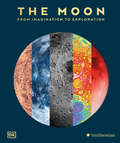- Table View
- List View
The Montenegrin Adriatic Coast: Marine Chemistry Pollution (The Handbook of Environmental Chemistry #110)
by Andrey G. Kostianoy Igor S. Zonn Aleksander V. Semenov Mirko Đurović Danijela JoksimovićThis is the second of two volumes that together provide an integrated picture of the Montenegrin Adriatic coast, presenting the natural components of the system as well as the chemical composition and chemical processes in the extended area. This book covers all aspects of marine chemistry such as the hydrographic and oceanographic characteristics of seawater, the toxicity of heavy metals in the marine environment, the quality of marinas and maritime areas, and the legal regime for protecting the marine environment from pollution. Given the breadth and depth of its coverage, the book offers an invaluable source of information for researchers, students and environmental managers alike.
The Monthly Sky Guide
by Ian RidpathThe ninth edition of Ian Ridpath and Wil Tirion's famous guide to the night sky is updated with planet positions and forthcoming eclipses to the end of the year 2017. It contains twelve chapters describing the main sights visible in each month of the year, providing an easy-to-use companion for anyone wanting to identify prominent stars, constellations, star clusters, nebulae and galaxies; to watch out for meteor showers ('shooting stars'); or to follow the movements of the four brightest planets, Venus, Mars, Jupiter and Saturn. Most of the sights described are visible to the naked eye and all are within reach of binoculars or a small telescope. This revised and updated edition includes sections on observing the Moon and the planets, with a comprehensive Moon map. The Monthly Sky Guide offers a clear and simple introduction to the skies of the northern hemisphere for beginners of all ages.
The Monthly Sky Guide, 10th Edition
by Ian Ridpath"Ian Ridpath and Wil Tirion — two consummate professionals in the field — have teamed up to produce an exemplary text with first-rate illustrations to inspire the beginning sky-gazer. I heartily recommend this text." — Neil English, Astronomy Now magazineA user-friendly companion for stargazers of all ages, this classic beginner's guide describes all the main sights of the night sky. The newly updated book contains a chapter for each month, describing prominent stars, constellations, star clusters, nebulae, and galaxies. Readers will discover when to watch meteor showers, when eclipses will occur, and how to follow the movements of the four brightest planets (Venus, Mars, Jupiter, and Saturn).Most of the sights are visible to the naked eye, and all can be seen with binoculars or a small telescope. Sections on observing the Moon and the planets include 50 easy-to-use maps that introduce the skies of the Northern Hemisphere and a comprehensive guide to observing the Moon. "The star maps are first quality … I find them to be a pleasure to look at and use. If you have a young person or friend you would like to share your love of astronomy with, get them a pair of binoculars and this book and you'll have a stargazing friend for life." — Mike Simonsen, Slacker Astronomy
The Moon
by Seymour SimonFrom Apollo 11's first landing to the mystery of moonquakes and the genesis of craters, this stunning introduction to our nearest neighbor in space describes the moon and its all-important relationship to Earth. Mesmerizing full-color photography and an informative text perfect this exciting and educational journey in space.
The Moon (A True Book (Relaunch))
by Steve TomecekDid you know the moon is considered a natural satellite? Or that its gravity affects ocean tides on Earth? This book explores the closest celestial body to Earth and the ways in which the moon and Earth affect each other.Chapters introduce topics including the moon's origin, its makeup and phases, the first people to walk on its surface, and the moon's role in both lunar and solar eclipses.Planets and stars, moons and galaxies! The universe is a vast and mysterious place with much to explore. And there's no better way to make amazing discoveries about space than with this reimagined series. With the latest NASA imagery, the classic structure and features of A True Book, and lively text, the titles in Our Universe bring the awe of the cosmos directly to readers. Students will come away with a wealth of knowledge about the incredible celestial bodies in our universe.This series covers Next Generation Science Standards core ideas including "The Universe and its stars" and "Earth and the solar system."
The Moon (New True Books: Space)
by Christine Taylor-ButlerHuman beings first set foot on the Moon on July 20, 1969, marking one of the most important events in the history of space exploration. <P><P>A True Book: Space series dives into the many components that make each planet distinctive and exceptional, as well as explore many of the other components that make up Space. This series includes an age appropriate (grades 3-5) introduction to curriculum-relevant subjects and a robust resource section that encourages independent study. <P><P>Since the first moon landing, scientists have continued to learn more about Earth's sole natural satellite. Readers will learn what it is like to walk on the surface of the Moon and what role the satellite plays in the solar system. They will also find out how scientists first began studying the Moon and how they are continuing their exploration today. Lexile Measure: 820
The Moon (Rookie Read-About Science)
by Carmen BredesonThis Rookie Read-About® Science book introduces young readers to the Moon. Colorful photos and simple text encourage children to read on their own as they learn how the Moon moves in space, how its craters were formed, why it seems to shine, and how humans were able to walk on its surface. Other books in this series are available in this library.
The Moon (Smithsonian)
by James BuckleyCheck out the moon—in all its phases—in this new Level 4 Penguin-Smithsonian nonfiction reader.There are myths about it. Men have landed on it. Just about everybody has gazed at it in wonder. But what is the moon? Where did it come from? What&’s it made of? Find out in this lively reader about the celestial body that&’s so familiar and yet so mysterious.
The Moon Book
by Gail GibbonsIdentifies the moon as our only natural satellite, describes its movement and phases, and discusses how we have observed and explored it over the years.
The Moon Hoax?: Conspiracy Theories on Trial (Science and Fiction)
by Thomas EversbergThis book is about the American moon-landings – and about the doubts expressed ever since concerning the reality of these landings. Were the images of men on the moon really just a huge and cleverly executed hoax? Eversberg explains the best-known claims and conspiracy theories, and analyzes the evidence with the help of detailed full-colour images, as well as numerous film documents that can be accessed directly from the book. He addresses both the persistent older claims and more recently devised doubts. The book will inform and entertain a wide range of readers interested in space exploration and tells a gripping story covering physics, politics and history.
The Moon Is Falling!
by Tom SeddonIsaac Newton did not discover gravity; people had noticed it before! But he did figure out the rules for how it works.
The Moon Seems to Change
by Barbara Emberley Ed Emberley Franklyn M. BranleyBecause the moon revolves around Earth, it seems to grow and shrink. Children can read about the phenomena of the moon's phases and with an experiment using an orange, a pencil, and a flashlight, they can see why the moon looks different at different times of the month. 'A welcome addition to science collections for young children. ' -SLJ.
The Moon Seems to Change (Let's-Read-and-Find-Out Science 2)
by Dr. Franklyn M. BranleyRead and find out about the phases of the moon in this colorfully illustrated nonfiction picture book.This clear and appealing science book for early elementary age kids, both at home and in the classroom, introduces basic information about the moon.Have you noticed that the moon sometimes seems to grow and shrink? Does it look like a big round ball? Or is it just a sliver of light in the sky? The moon seems to change. But it doesn't really. The moon revolves around the Earth. It takes about four weeks to make the journey, and as it travels around we can only see certain parts of it. Try the simple experiment described inside using an orange, a pencil, and a flashlight, and you'll understand why the moon seems to change.This is a Level 2 Let's-Read-and-Find-Out, which means the book explores more challenging concepts for children in the primary grades. The 100+ titles in this leading nonfiction series are:hands-on and visualacclaimed and trustedgreat for classroomsTop 10 reasons to love LRFOs:Entertain and educate at the same timeHave appealing, child-centered topicsDevelopmentally appropriate for emerging readersFocused; answering questions instead of using survey approachEmploy engaging picture book quality illustrationsUse simple charts and graphics to improve visual literacy skillsFeature hands-on activities to engage young scientistsMeet national science education standardsWritten/illustrated by award-winning authors/illustrators & vetted by an expert in the fieldOver 130 titles in print, meeting a wide range of kids' scientific interestsBooks in this series support the Common Core Learning Standards, Next Generation Science Standards, and the Science, Technology, Engineering, and Math (STEM) standards. Let's-Read-and-Find-Out is the winner of the American Association for the Advancement of Science/Subaru Science Books & Films Prize for Outstanding Science Series.
The Moon in Close-up
by John WilkinsonInformation collected by recent space probes sent to explore the Moon by the USA, the European Space Agency, Japan, China and India has changed our knowledge and understanding of the Moon, particularly its geology, since the Apollo missions. This book presents those findings in a way that will be welcomed by amateur astronomers, students, educators and anyone interested in the Moon. Enhanced by many colour photos, it combines newly acquired scientific understanding with detailed descriptions and labelled photographic maps of the lunar surface. Guided by observation methods explained in the book and 17 Study Areas presented and carefully explained in the last chapter, amateur astronomers can observe these features from Earth using telescopes and binoculars. Readers who consult the photographic maps will gain a better understanding about the Moon's topography and geology. The book is rounded out by a helpful glossary.
The Moon over Star
by Dianna Hutts AstonOn her family's farm in the town of Star, eight-year-old Mae eagerly follows the progress of the 1969 Apollo 11 flight and moon landing and dreams that she might one day be an astronaut, too.
The Moon's Largest Craters and Basins
by Charles J. ByrneThis most recent book from lunar expert Charles J. Byrne combines the latest comprehensive imagery, topography and gravity data from all three recent Moon missions, Kaguya, Lunar Reconnaissance Orbiter and GRAIL. These major polar-orbit surveys are presented here in compact form for the convenience of amateur and practical astronomers concerned with the Moon. Chosen from the Near and Far Side's large craters and basins over 200 km in diameter, each of the 71 highlighted features is depicted with a two-page presentation of the data that includes false color topographic maps next to the mission images. Additionally, the features are presented in the estimated chronological sequence of their creation, based on a consideration of stratigraphy (overlapping layers from neighboring features) and the relative degradation of surface features. Using this sequence as a way to convey the relative ages of lunar features, the author presents various theories concerning the Moon's impact and thermal history e. g. the available evidence allows for constraints to be placed on the duration of the Late Heavy Bombardment period. The relationships between impact dynamics and variations in the gravity field of the Moon are also discussed. The new mission data makes possible this renewed conjecture about the history and evolution of the Moon, which is presented here with much worthwhile information for amateurs and professionals alike.
The Moon's Near Side Megabasin and Far Side Bulge
by Charles ByrneSince Luna and Lunar Orbiter photographed the far side of the Moon, the mysterious dichotomy between the face of the Moon as we see it from Earth and the side of the Moon that is hidden has puzzled lunar scientists. As we learned more from the Apollo sample return missions and later robotic satellites, the puzzle literally deepened, showing asymmetry of the crust and mantle, all the way to the core of the Moon. This book summarizes the author's successful search for an ancient impact feature, the Near Side Megabasin of the Moon and the extensions to impact theory needed to find it. The implications of this ancient event are developed to answer many of the questions about the history of the Moon.
The Moon: 365 reflections
by PyramidThroughout history, legend and myth, the Moon has symbolized immortality and eternity, enlightenment and adventure and has inspired poets, philosophers, astronomers and artists. Reflections upon the Moon from literature, philosophy, science and ancient wisdom are gathered together in this enchanting collection.
The Moon: A Beginner’s Guide to Lunar Features and Photography
by James Harrop“A must-have for anybody interested in lunar photography. If you are a beginner, this is the only lunar observing book you will ever need.” —BBC Sky at Night MagazineThis is a practical guide aimed at beginners interested in learning about the Moon and how to image our closest satellite neighbor. The book contains the complete photographic process including equipment, settings, capture techniques, stacking and image processing, each of which is vitally important to producing a good image. The information is laid out in a visual and easy-to-understand format so that even the dark art of image processing will not seem quite so daunting. There are many high-quality color photos of the Moon to help you learn about different lunar features and a list of 100 lunar targets identified as a challenge for you to find. All the targets have been captured by the author who provides a brief description of each feature and where it is located on the lunar surface. You will be surprised to discover the fine level of lunar detail which you can see from your back garden and once you start imaging, you will realize there is more to the Moon than meets the eye.“Although this book uses the Moon as a starting point, the wisdom it imparts can be applied to many different areas of astrophotography, including how to use planetary imaging preprocessing for crystal-clear images. Whether you’ve never picked up a camera before or you’re looking to get a few tips and tricks, this book is a great addition to your photography library.” —How it Works
The Moon: A Biography
by David WhitehouseIn The Moon David Whitehouse explains how our nearest celestial neighbor was created (and what moonrocks tell us of its earth-shattering origins), and how its existence may have been a crucial factor in mankind being here at all. Whitehouse discusses how man has related to it, worshipped it and blamed it for his own 'lunacy' - though can it really affect our behavior? He tells how the first person to look at the moon through a telescope was not Galileo, as is commonly believed, but an Englishman who knew Shakespeare and had a part in the Gunpowder Plot.While some of the story of the modern moon race may be known, the first moon race to map its surface has not been charted before, and is one of the most dramatic and unexpected stories in science. The recent discovery of ice hidden in the moon's polar regions opens up new possibilities for space travel that mean it is essential that mankind returns there if we are ever to journey to the rest of the solar system.
The Moon: A Biography
by Dr David WhitehouseIn The Moon David Whitehouse explains how our nearest celestial neighbor was created (and what moonrocks tell us of its earth-shattering origins), and how its existence may have been a crucial factor in mankind being here at all. Whitehouse discusses how man has related to it, worshipped it and blamed it for his own 'lunacy' - though can it really affect our behavior? He tells how the first person to look at the moon through a telescope was not Galileo, as is commonly believed, but an Englishman who knew Shakespeare and had a part in the Gunpowder Plot.While some of the story of the modern moon race may be known, the first moon race to map its surface has not been charted before, and is one of the most dramatic and unexpected stories in science. The recent discovery of ice hidden in the moon's polar regions opens up new possibilities for space travel that mean it is essential that mankind returns there if we are ever to journey to the rest of the solar system.
The Moon: A History for the Future (Economist Books)
by Oliver Morton The EconomistAn intimate portrait of the Earth's closest neighbor--the Moon--that explores the history and future of humankind's relationship with itEvery generation has looked towards the heavens and wondered at the beauty of the Moon. Fifty years ago, a few Americans became the first to do the reverse--and shared with Earth-bound audiences the view of their own planet hanging in the sky instead.Recently, the connection has been discovered to be even closer: a fragment of the Earth's surface was found embedded in a rock brought back from the Moon. And astronauts are preparing to return to the surface of the Moon after a half-century hiatus--this time to the dark side.Oliver Morton explores how the ways we have looked at the Moon have shaped our perceptions of the Earth: from the controversies of early astronomers such as van Eyck and Galileo, to the Cold War space race, to the potential use of the Moon as a stepping stone for further space exploration.Advanced technologies, new ambitions, and old dreams mean that men, women, and robots now seem certain to return to the Moon. For some, it is a future on which humankind has turned its back for too long. For others, an adventure yet to begin.
The Moon: A Translation of Der Mond (Historical & Cultural Astronomy)
by Johann Friedrich SchmidtJulius Schmidt was one of the finest astronomical observers of his time, and his detailed map of the Moon surpassed anything that had come before. Today, the German astronomer and geophysicist has remained a largely neglected figure, despite being one of the most important players in the history of lunar studies. This book at last makes accessible Schmidt’s highly regarded German work, Der Mond. Considered an astronomical classic of the nineteenth century, Der Mond remained without a proper English counterpart for the last century and a half, until now. The author’s faithful English translation provides readers with much-needed access into Schmidt’s original publication, with the aim of showing the community just how vital his work and legacy have been in the international field of selenography.
The Moon: Discover the Mysteries of Earth's Closest Neighbour (Space Explorers)
by Dr. Sanlyn Buxner Pamela Gay Georgiana KramerDiscover the mysteries of Earth&’s closest neighbor in this incredible guide to the Moon. This charming book is the perfect introduction for young readers who want to learn about every aspect of the moon. The Moon features breakdowns of the Moon&’s formation and geography, the lunar phases, a history of NASA&’s Apollo missions, the Moon&’s effect on Earth&’s tides and nocturnal animals, recent scientific discoveries, and so much more!This fascinating guide introduces 7-9 year olds to the moon&’s past, present, and future, through stunning illustrations, photographs, and fascinating information. Packed with mind-blowing facts, this incredible book of the moon is perfect for space lovers everywhere. Explore this wonderful book about the moon, featuring:- In-depth information, backed up by space photography, probe images, illustrations, and fun diagrams- Stunning, dreamy illustrations, making this title a perfect gift, as well as a solid reference book - Easy-to-digest sections, each filled with incredible facts and visuals- The entire subject of the Moon – including its formation and geography, the lunar phases, a history of NASA&’s Apollo missions, its effect on Earth&’s tides and nocturnal animals, plenty of recent scientific discoveries, and more!Boasting beautiful illustrations by artist Dawn Cooper, combined with up-to-date images from space agencies such as NASA and ESA, info panels, timelines, and diagrams, that help demystify and explain the wonder of the Moon, this is the perfect book for young readers.
The Moon: From Imagination to Exploration
by DKThe Moon has been an object of fascination for religions, cultures, and societies the world over since the dawn of humanity. The Moon is a beautifully illustrated account of our lunar neighbor in all its guises: a guiding light in the night sky, the driver of oceanic tides and natural cycles, the subject of exhaustive scientific study, and an enduring influence in literature, art, and popular culture. Exploring theories for the Moon’s origins around 4.5 billion years ago, the book charts its influence on the calendar systems and mythologies of early societies, and its role in the invention of the telescope and the science-fiction genre. It tells the incredible story of the Cold War space race and the first Moon landings. Specially commissioned illustrations capture the Moon's phases and motions in vivid detail, while stunning photography and artefacts bring the rich history of lunar observation and exploration to life. The last chapter of the book features extensive coverage of NASA’s Artemis mission to return astronauts to the lunar landscape in 2026, paving the way for future missions to Mars. The book also includes a guide to observing the Moon, complete with annotated maps and profiles of key physical features such as Tycho Crater and the Sea of Tranquility. Straddling science, culture, and history across the world, The Moon is a captivating and richly informative celebration.


